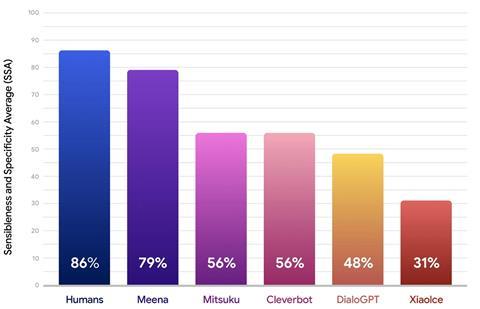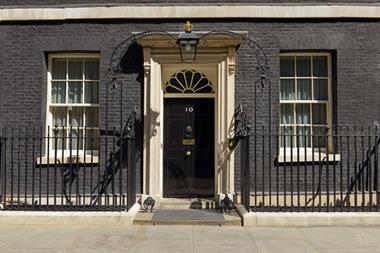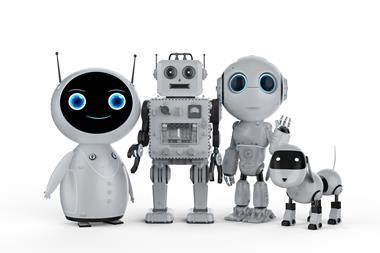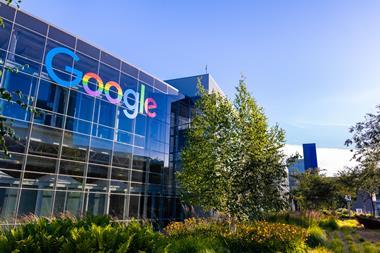Technological advances in artificial intelligence like Google Meena claim to be more sophisticated than today’s chatbots in conversational complexity, but what value does it bring to the insurance industry?
Meena is Google’s world first near-human chatbot with conversational abilities that trump current technology.
This is what Laura Drabik, chief evangelist of software firm Guidewire, believes. She said this new technology could hold benefits for insurers and brokers when handling low complexity and high-volume activities, freeing up staff so that they can turn their attention to more analytical tasks and save time and money.
Although chatbots are a top insurtech trend, they fall short as the technology isn’t robust enough to offer conversational ability that is “reliable” or meaningful.
Drabik told Insurance Times that one particular dilemma for the industry is manning call centres and high volume low complexity activities. But could Google Meena be the answer?
“What we noticed was these questions were being asked time and time again, so the thought was: is there a way that robots can answer these questions and then free up the humans?”
She gave an example of some common customer questions such as: am I covered for something particular? Can I drive to a certain location and still be covered by insurance?
When asked if job losses for the entry level administration positions were a possibility, Drabik added that she has instead seen a “redistribution of labour”.
“Instead of having a call centre manned by 100 individuals, what they are doing instead of laying off 50 of those individuals because they are bringing in chatbots is retraining and redeploying them in other areas.”
Drabik claims many more new jobs will be created this way.
Meanwhile, Alastair Robertson, head of continuous improvement and automation at Zurich, said jobs were changing, particularly back office and administration roles, and in all sectors not just insurance.

“What we have seen is that people that have maybe been on those frontline jobs are upskilling themselves into other roles. Instead of removing jobs, we are changing the roles within the company in line with changing customer needs and technology.”
All about the omnichannel
In terms of the cost of implementing something like Google Meena across the industry, Drabik said: “If you are comparing training up a chatbot to a human I would say it would depend on where you are but that it is more affordable to train up the human – that being said it is more than about saving money, it is absolutely about delivering omnichannel customer service and that is why carriers are looking at chatbots, it’s not for cost saving.”
An omnichannel is a cross-channel content strategy.
“What they want to do is provide 24/7 service, respond to the customer with self-service so that they do not have to go through a human, [but] provide a human [where needed].
“To be clear it’s not about the saving, it’s about the service. It’s because of companies like Netflix and Amazon that have come before and laid the path and made it about service.”
The chatbot industry is estimated to be worth £2.6bn across all industries.
What is Google Meena?
It is Google’s end-to-end neural-network powered chatbot that it claims is better than other chatbots because of its near-human conversational ability.
Google was motivated to design a “new human evaluation metric” that captures attributes of natural conversation, as most other chatbots are based on predetermined question and answer sets.
Meena was trained on using public social-media chatter. It has yet to be released.
How could it help brokers and insurers?
Meena could respond to customers and free up staff time so that they can turn their attention to other more complicated tasks. But it could also deliver more intelligent conversation as opposed to a less sophisticated chatbot.
It can also help in the event of an accident and possibly get help from a human.
Overall it could help deliver an ominchannel service to policyholders further to make the user experience more efficient
How is it different to other chatbots?
Meena uses open-ended conversation that covers a wide topic range so it can respond sensibly. This is challenging as most run-off the-mill chatbots cannot keep up as they are programmed using predetermined question sets.
Opening up the doors
Drabik added:“Chatbots today operate at such a narrow level of functionality – that’s because there are pre-defined questions with answers, but Meena opens up the doors.”
Potentially, she said, a policyholder could say ‘I’m injured’ and Meena could reply back and ask ‘where are you and can I send you help?’
Drabik imagines Meena will become also like a personal insurance advisor.
In situations where multiple technologies are used, Drabik stressed that the data would be delivered back to “one brain” so this would not be an issue.
But if Meena mad an incorrect decision, the firm using it could be held liable.
But is it too complicated?
Simon Yun-Farmbrough at 360Globalnet believes technology like Meena might be overcomplicating the issue. He said: “If you choose the simpler route, it’s already proven, it absolutely delights your customers and it is very low cost.
“The other thing is Meena is going to have to link into something, it’s still going to need an underlying claims system.”
Meanwhile, Robertson highlighted cost and said that while Zurich was looking at artificial intelligence tools, it found that its claims handlers were having to correct their decisions.
Robertson added that while chatbots are an alternative way of communicating with the customer, they still need a member of staff sitting behind them.
Zurich launched its chatbot Zara in 2018 to handle non-emergency home and motor claims in three hours rather than a day.
Hosted by comedian and actor Tom Allen, 34 Gold, 23 Silver and 22 Bronze awards were handed out across an amazing 34 categories recognising brilliance and innovation right across the breadth of UK general insurance.






















































No comments yet